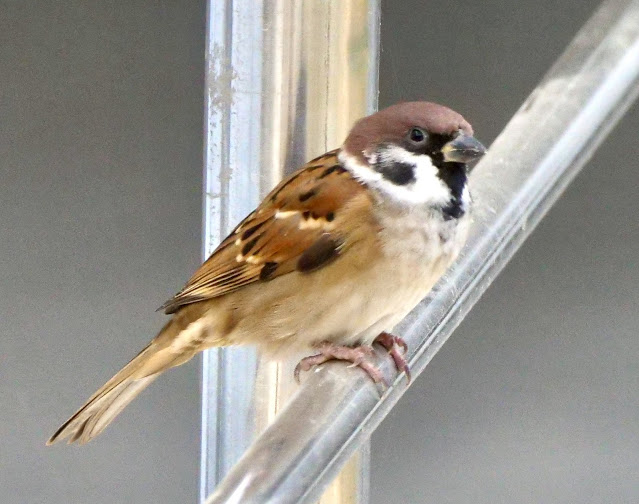The above pair of scaly breasted Munia, perched in the wild grass early in the morning gave me an opportunity to observe their courtship. They were in the grooming ritual, but communicating to each other in chirps and looks.
Usually a flock of these Munia consists of about ten or more and fly together and feed from the ground. They were mostly near the grass, whenever I noticed them, as they feed on the grass seeds, insects and some grains.
These birds are protected by wild life rules in India with caging or hunting prohibited.
Two or three generations of them live together and are often invaders into garden where there is overgrowth of grass.
The photos below of an Eurasian tree sparrow have a similar colour complexion but the plumage and the bills are different. Their habitat is also is different. They come close to human habitats and can be found near the kitchen or where food is served. They are common in lightly wooded areas with hedgerows, seedbeds along lake shores, parks with ornamental plants and bushes.
This family of birds used to be popular in urban livelihood, but with vegetations fading away, they have moved to sub-urban or rural areas. The house sparrows have a greyish crown and the tree sparrows have the chestnut-brown head and nape. The tree sparrows feed on rice, but also protect the crops by feeding on the pests. The tree sparrows thrive on Sunflower seeds.
Both house sparrow and tree sparrow feed from the ground. It is therefore a good practice to scatter the seeds in the corner of a courtyard for a few days, which will be noticed by the house or tree sparrows to come and stay around.
The sparrows have a different style of grooming because of which they look more tidier in their plumage than the Munia.
The smaller birds can be fascinating for bird watchers. Their habitat and behaviour tell us a lot of about the changing ecology and human indiscreetness towards them!
M.C.Mathew(text and photo)











No comments:
Post a Comment